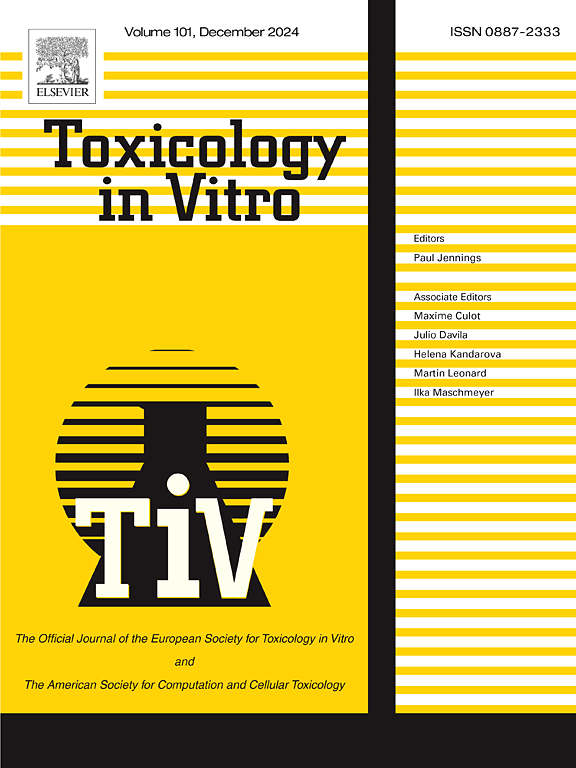Go with the flow: An in vitro model of a mature endothelium for the study of the bioresponse of IV injectable nanomedicines
IF 2.6
3区 医学
Q3 TOXICOLOGY
引用次数: 0
Abstract
The first exposure of intravenously (IV) administered nanomedicines in vivo is to endothelial cells (ECs) lining blood vessels. While it is known that in vitro endothelium models to assess responses to circulating nanoparticles require shear stress, there is no consensus on when and how to include it in the experimental design. Our experimental workflow integrates shear stress by featuring a flow-induced mature endothelium (14 days) and a flow-mediated nanoparticle treatment. The mature endothelium model exhibited distinct features that indicated a structurally stable and quiescent monolayer. Upon treatment with iron sucrose under dynamic conditions, there was a lower nanoparticle uptake, lower cytotoxicity, and decreased expression of activation markers compared to the static control. This response was attributed to glycocalyx expression, predominantly observed on the mature endothelium. In conclusion, our proposed in vitro endothelium model can be leveraged to understand the dynamics of IV injectable nanomedicines at the initial nano-bio interface in veins immediately post-injection.

顺其自然:用于研究静脉注射纳米药物生物反应的成熟内皮体外模型
静脉注射(IV)的纳米药物在体内的首次暴露是内衬血管的内皮细胞(EC)。众所周知,用于评估循环纳米颗粒反应的体外内皮模型需要剪切应力,但何时以及如何将剪切应力纳入实验设计尚未达成共识。我们的实验工作流程整合了剪切应力,包括流动诱导的成熟内皮(14 天)和流动介导的纳米颗粒处理。成熟内皮模型表现出明显的特征,表明单层结构稳定且处于静止状态。在动态条件下用蔗糖铁处理时,与静态对照组相比,纳米粒子的吸收率较低,细胞毒性较低,活化标记物的表达也有所减少。这种反应归因于糖萼的表达,主要是在成熟内皮上观察到的。总之,我们提出的体外内皮模型可用于了解静脉注射纳米药物在注射后初期纳米生物界面的动态变化。
本文章由计算机程序翻译,如有差异,请以英文原文为准。
求助全文
约1分钟内获得全文
求助全文
来源期刊

Toxicology in Vitro
医学-毒理学
CiteScore
6.50
自引率
3.10%
发文量
181
审稿时长
65 days
期刊介绍:
Toxicology in Vitro publishes original research papers and reviews on the application and use of in vitro systems for assessing or predicting the toxic effects of chemicals and elucidating their mechanisms of action. These in vitro techniques include utilizing cell or tissue cultures, isolated cells, tissue slices, subcellular fractions, transgenic cell cultures, and cells from transgenic organisms, as well as in silico modelling. The Journal will focus on investigations that involve the development and validation of new in vitro methods, e.g. for prediction of toxic effects based on traditional and in silico modelling; on the use of methods in high-throughput toxicology and pharmacology; elucidation of mechanisms of toxic action; the application of genomics, transcriptomics and proteomics in toxicology, as well as on comparative studies that characterise the relationship between in vitro and in vivo findings. The Journal strongly encourages the submission of manuscripts that focus on the development of in vitro methods, their practical applications and regulatory use (e.g. in the areas of food components cosmetics, pharmaceuticals, pesticides, and industrial chemicals). Toxicology in Vitro discourages papers that record reporting on toxicological effects from materials, such as plant extracts or herbal medicines, that have not been chemically characterized.
 求助内容:
求助内容: 应助结果提醒方式:
应助结果提醒方式:


